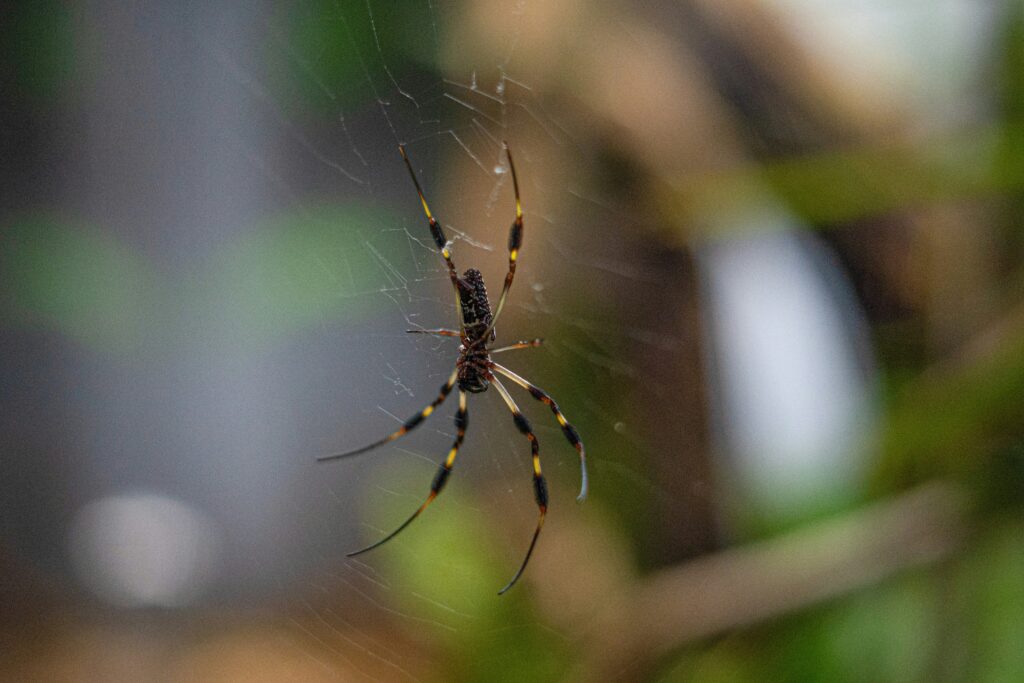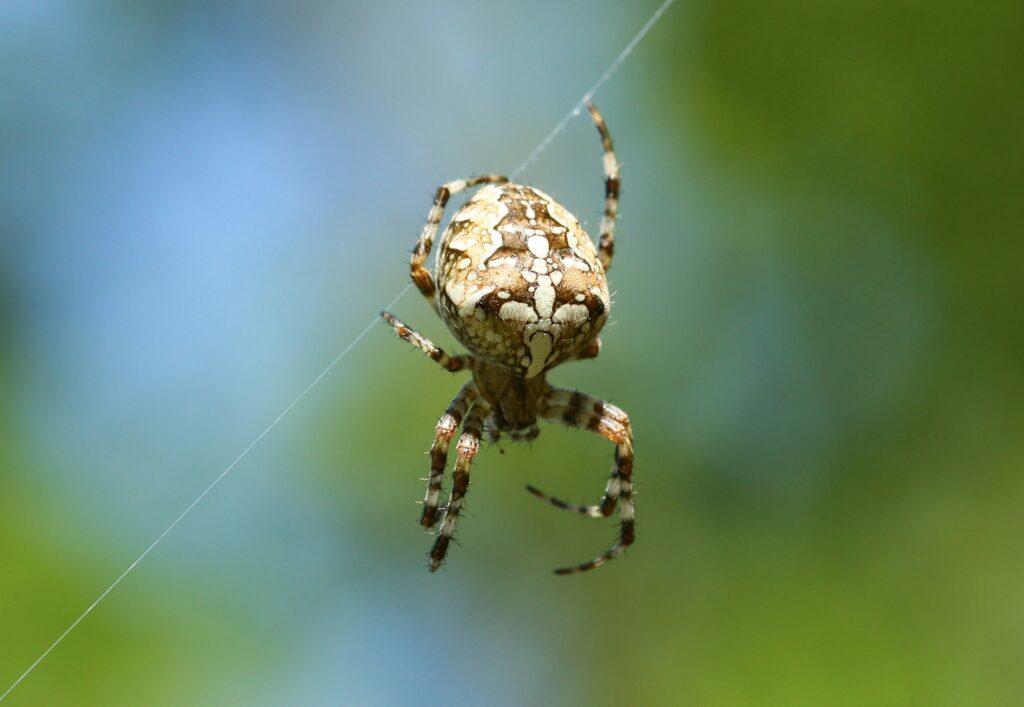The world of arachnids is vast and fascinating, with over 48,000 spider species identified across the globe. While most spiders prefer to avoid human contact, certain venomous species have earned reputations for their aggressive tendencies and willingness to attack when threatened. Understanding which spiders are more likely to stand their ground rather than retreat provides crucial knowledge for anyone living in regions where these creatures are common. This article explores the most aggressive venomous spiders worldwide, examining their attack behaviors, the circumstances that trigger defensive responses, and the medical significance of their bites. By distinguishing between truly aggressive species and those merely defending themselves, we can better appreciate these often misunderstood creatures while maintaining appropriate caution.
The Sydney Funnel-Web Spider: Australia’s Defensive Powerhouse

The Sydney funnel-web spider (Atrax robustus) stands as perhaps the most notoriously aggressive venomous spider in the world. Unlike many spiders that retreat when threatened, the Sydney funnel-web often adopts a defensive-aggressive stance, rearing back on its hind legs and displaying its fangs before striking repeatedly with remarkable speed and precision. Males are particularly aggressive during mating season when they wander in search of females, potentially entering homes and swimming pools. Their venom contains a neurotoxin called delta-atracotoxin, which specifically affects the human nervous system, making them one of the few spiders whose venom is particularly dangerous to humans rather than their usual prey. Before antivenom became available in 1981, their bites resulted in several human fatalities, with symptoms progressing rapidly from intense pain to life-threatening complications.
Brazilian Wandering Spiders: Aggressive Nomadic Hunters

Brazilian wandering spiders (genus Phoneutria) have earned the Guinness World Record as the most venomous spiders on Earth and demonstrate remarkably aggressive behavior when cornered. Rather than spinning webs, these nomadic hunters actively search for prey at night and hide in dark, secluded spaces during daylight hours—including inside banana bunches, shoes, cars, and clothing. When threatened, they exhibit a distinctive defensive posture by raising their front legs high, swaying from side to side, and striking repeatedly without hesitation. Their venom contains a complex mixture of toxins affecting the nervous system and can cause intense pain, breathing problems, and in severe untreated cases, death. Their willingness to stand their ground rather than flee makes encounters particularly dangerous, though fatalities have become rare since antivenom development.
The Six-Eyed Sand Spider: Desert Ambush Predator

The six-eyed sand spider (Sicarius hahni), native to the deserts of southern Africa, employs a unique aggressive hunting strategy despite its generally reclusive nature. This spider buries itself just beneath the sand’s surface, creating an ambush zone where it waits motionless for prey to pass nearby before erupting from its hiding place with surprising speed and aggression. While not typically aggressive toward humans unless directly handled, their hunting behavior demonstrates a predatory commitment unlike most spiders. Their venom contains a powerful cytotoxin that causes tissue necrosis and can potentially lead to death, though confirmed human envenomations are exceedingly rare. Research suggests their venom may be among the most potent of all spiders, possibly comparable to that of the recluse spiders but delivered in larger quantities.
Mouse Spiders: Australia’s Ground-Dwelling Aggressors

Mouse spiders (genus Missulena) demonstrate surprisingly aggressive behavior when their burrows are disturbed, especially during breeding seasons. Native to Australia, these robust ground-dwelling spiders possess powerful fangs capable of striking through fingernails, and they often deliver a full venom load rather than the dry or partial bites common to many spider species. Male mouse spiders frequently wander during daylight hours in search of mates, increasing the likelihood of human encounters and defensive bites. Their venom contains compounds similar to those found in funnel-web spiders, though typically less potent, and can cause severe systemic symptoms requiring medical treatment. Unlike many spiders that attempt to flee when threatened, mouse spiders frequently stand their ground and strike repeatedly when confronted.
Wolf Spiders: Territorial Defenders

Wolf spiders (family Lycosidae) exhibit territorial aggression that distinguishes them from many other spider families, particularly when guarding egg sacs or young. Female wolf spiders carry their egg sacs attached to their spinnerets and later carry their spiderlings on their backs, becoming notably more aggressive during these maternal periods. These ground-dwelling hunters possess excellent vision and will often confront perceived threats rather than retreat, particularly in confined spaces. Their bite, while venomous and painful, rarely causes severe medical complications in humans beyond localized pain, swelling, and itching. What makes them noteworthy in terms of aggression is their willingness to charge toward perceived threats—a behavior observed when they feel cornered or when defending young.
Redback Spider: Australian Defensive Specialist

The redback spider (Latrodectus hasselti), a relative of the black widow, demonstrates surprising aggression when its web is disturbed, particularly females guarding egg sacs. Unlike many web-building spiders that flee from disturbances, redbacks often remain in their webs and actively defend their territory with remarkable persistence. Their webs typically feature a funnel-like retreat that provides the spider a defensive position from which to attack prey or threats. The female’s venom contains latrotoxin, a powerful neurotoxin that can cause the significant “redback syndrome” in humans, characterized by intense pain, sweating, muscle weakness, and in severe cases, more serious systemic effects. Their defensive behavior includes rapidly approaching vibrations on their web rather than retreating, a relatively unusual response among web-building species.
Yellow Sac Spiders: Notorious Night Biters

Yellow sac spiders (primarily genus Cheiracanthium) exhibit an unusual form of aggression—they frequently bite humans without provocation, particularly during nocturnal encounters. These pale-colored spiders actively hunt at night and may crawl across sleeping humans, biting if they feel trapped or compressed between skin and bedding. Unlike defensive biters that only strike when directly threatened, yellow sac spiders appear more prone to bite even with minimal provocation. Their venom contains cytotoxic compounds that cause painful necrotic lesions, though typically less severe than those from brown recluse spiders. Research suggests they may be responsible for more bites than any other spider species in many regions, partly due to their tendency to enter homes and their seemingly lower threshold for biting behavior.
Camel Spiders: Relentless Desert Pursuers

Camel spiders (order Solifugae), while technically not true spiders but solifugids, deserve mention for their remarkably aggressive hunting behavior that often frightens observers. These arachnids have been observed pursuing humans—not to attack, but because they seek the shade created by moving people in their hot desert habitats. Their apparent “aggression” stems from their extraordinary speed (up to 10 mph) and relentless pursuit behavior, which can give the impression they are chasing potential prey. Though not venomous, their powerful jaws can deliver painful bites that crush prey with significant mechanical force. Their hunting involves actively chasing down prey rather than ambushing or trapping it, utilizing remarkable stamina that allows them to pursue prey for extended periods—a behavior rarely seen in true spiders.
Brown Recluse: Reluctant But Dangerous Biter

The brown recluse spider (Loxosceles reclusa) presents an interesting case of a medically significant spider that isn’t particularly aggressive, despite its fearsome reputation. These spiders typically bite only when directly pressed against human skin, such as when trapped in clothing or bedding. Their defensive nature contrasts with truly aggressive species, as they prefer to retreat when possible and bite only as a last resort. However, what places them on this list is the significant medical consequences of their bites, which contain powerful cytotoxic venom that can cause necrotic lesions requiring extensive medical treatment. Their presence in human dwellings combined with their ability to squeeze into tight spaces creates situations where defensive bites become more likely, especially in regions where they’re abundant.
Black Widow Spiders: Reluctant But Potent Defenders

Black widow spiders (genus Latrodectus) demonstrate moderate aggression when defending their webs and egg sacs, though they generally prefer to retreat from larger threats when possible. Female black widows, particularly those guarding egg sacs, become notably more aggressive and likely to bite if they cannot escape a perceived threat. Their venom contains alpha-latrotoxin, a potent neurotoxin that triggers massive release of neurotransmitters, causing intense pain and potential systemic symptoms known as latrodectism. Despite their dangerous venom, black widows typically demonstrate restrained aggression compared to species like the Sydney funnel-web, biting humans primarily when physically pressed against the skin or when their webs are directly disturbed. Their defensive strategy typically involves retreating to a hidden portion of their web before resorting to biting.
Factors That Influence Spider Aggression

Spider aggression varies significantly based on several biological and environmental factors that trigger defensive responses. Male spiders often become more aggressive during mating seasons when they actively search for females, increasing human encounters and defensive reactions. Maternal aggression represents another key factor, as females guarding egg sacs or spiderlings demonstrate significantly enhanced defensive behaviors across numerous species. Environmental conditions also play crucial roles—many species show increased aggression during hot, dry weather or when their habitats are disturbed by seasonal changes or human activity. Additionally, spider aggression often correlates with venom potency; species with less effective venom typically demonstrate enhanced aggressive displays and multiple strikes to compensate for lower toxicity, while those with more potent venom may show restraint in defensive situations.
Differentiating Aggression from Defense

Understanding the distinction between true aggression and defensive behavior provides essential context when discussing dangerous spider species. True aggression involves spiders actively pursuing or attacking without provocation—a behavior extremely rare among spiders, as even the most “aggressive” species typically attack only when they perceive a threat. Most spider bites occur when the arachnids feel cornered, trapped, or directly threatened, representing defensive rather than aggressive responses. Certain species like the Sydney funnel-web and Brazilian wandering spider have lower thresholds for defensive responses and may strike repeatedly rather than attempting to escape, behaviors often misinterpreted as aggression. Environmental context matters significantly—a spider displaying threat postures in its web differs fundamentally from one that pursues a retreating human, with the latter representing much rarer true aggression.
Minimizing Risk During Spider Encounters

Understanding spider behavior provides the foundation for reducing bite risks when encountering potentially dangerous species. When facing aggressive spiders, maintain distance and avoid making sudden movements that might trigger defensive responses—slow, deliberate movements away from the spider typically represent the safest approach. Wearing protective clothing including gloves and closed shoes when gardening or working in areas known to harbor medically significant species provides essential protection against accidental encounters. Regularly inspecting and shaking out clothing, shoes, and bedding before use significantly reduces the risk of compressive bites that occur when spiders become trapped against skin. For home protection, sealing entry points, reducing clutter where spiders hide, and maintaining a consistent pest control regimen help minimize the presence of potentially dangerous species while preserving beneficial non-aggressive spiders that control other pests.
Conclusion: Respecting Arachnid Defenses

The most aggressive venomous spiders represent a minority among the thousands of spider species worldwide, with most preferring to avoid human interaction entirely. Species like the Sydney funnel-web, Brazilian wandering spider, and mouse spider demonstrate more pronounced defensive behaviors that can appear as aggression, particularly when they stand their ground rather than fleeing. Understanding that spider “aggression” typically represents defensive behavior rather than true hostility helps contextualize these fascinating creatures while maintaining appropriate caution. For those living in regions where medically significant species exist, knowledge of local spider behavior, appearance, and habitat preferences provides the foundation for safely coexisting with these important ecosystem members. With proper precautions and respect for their space, even the most defensive venomous spiders present minimal risk to informed humans who recognize their vital ecological roles.

